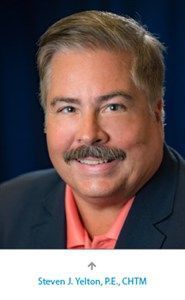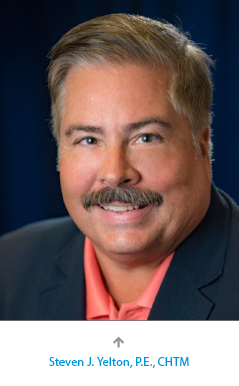
What will be the “look” of HTM educational programs in the future?
How will the HTM program of the future be structured? Will it be completely live instruction, completely online or possibly a hybrid of both or will it survive in any form?
Fri Oct 14 2016
My column this time contains questions and food for thought for the future. As I thought about a topic  for my column, I was reading the comments and questions in AAMI’s, “Educators Discussion Group Digest.” It became immediately apparent to me that there is significant concern in the HTM educational community about whether educational programs will survive in the future and, if so, what will be the “look.”
for my column, I was reading the comments and questions in AAMI’s, “Educators Discussion Group Digest.” It became immediately apparent to me that there is significant concern in the HTM educational community about whether educational programs will survive in the future and, if so, what will be the “look.”
According to the very insightful educators commenting in the group budget cuts, difficulty finding qualified faculty, student recruitment, as well as an emphasis on headcount and credit hours by educational institutions are having a strong effect on HTM programs and their future.
How will the HTM program of the future be structured? Will it be completely live instruction, completely online or possibly a hybrid of both or will it survive in any form? What will be the best format to maintain quality instruction while providing a cost-effective option for HTM education?
Currently HTM programs at the associate and bachelor degree levels are struggling to attract adequate numbers of students to meet the enrollment expectations of the administration of the institutions despite their best efforts. In my opinion, the most interesting part of this dilemma is that there seems to be more very attractive positions available than applicants out there.
In speaking to colleagues and reading the discussion groups, there seems to be a national need of qualified graduates of these programs. Yet, the numbers of students enrolling in many of the programs are dropping slightly. I thought students would be attracted to exciting and “techy” programs where there are lots of jobs? The one caveat that I can mention to this is that the graduates may have to relocate to attain these positions. At my institution, which is a community college, this is an issue.
As educators, we are attending career fairs, parents nights, high school events and professional meetings to get the word out to prospective students, their parents, employers, etc. We are often taking our industry advisors with us. In general, we are seeing little return on our time investment.
A disturbing occurrence that is happening to some HTM programs is that their educational institutions are choosing to completely close all or most of their HTM programs nationally, downgrade the program or possibly put them “on notice” about increasing their enrollment or risk losing the program. This is happening to some extremely high-quality programs simply because they are not able to meet the administration’s benchmark for the generated number of credit hours required for a program.
In the near future, I feel that we are going to have to look at alternative methods to supplement our educational programs. Professional organizations such as AAMI are willing to help alleviate the problem of too few HTM professionals in any way that they can. AAMI is reaching out to all HTM professionals including educators, employers, and recruiters asking what they can do to help. As educators we need to work together to enlist the help of all of these constituents at the national and local levels to help us keep these HTM programs healthy.
One significant hurdle in keeping HTM programs flourishing is the cost of laboratory equipment. Some educational institutions are having a difficult time to just maintain their current funding levels, let alone increasing funding to facilitate the purchase of newer equipment. If it wasn’t for the HTM industry partners at my college and their donations of time and equipment, the HTM program may not be able to survive.
We are investigating alternative methods of providing laboratory experiences to supplement our live laboratory and cooperative education experiences. Here are two methods that have been very successful. One has been to enlist the help of our cooperative education and graduate employers to allow us to conduct laboratory experiences at their hospitals as part of the curriculum. This can be a logistical challenge, but is well worth the efforts. The other is a “YouTube” site where we post scheduled maintenance videos that our students have produced. These videos are used as a laboratory exercise for future classes. This has proven to be a great resource to us on many fronts. For example, the obvious outcome is to provide many videos for use in laboratories. A second outcome is to use this as a recruiting tool to show prospective students the type of projects that they may complete as an HTM student and graduate.
The question now is: How are we going to compete to be successful in the future? This is an important question since it could shape how we provide highly qualified HTM technicians and engineers in the years to come. We must come together to develop a comprehensive plan that includes educators, employers and professional societies working together to provide HTM leaders for the future.
There are many passionate HTM educators and professionals working together to provide quality educational programs for our future. To them, I say keep up the great work and thanks!
Steven J. Yelton, PE, CHTM, is a senior consultant for HTM at a health network in Cincinnati, Ohio and a professor at Cincinnati State Technical and Community College where he teaches biomedical instrumentation courses. He is a member of AAMI’s Board of Directors-Executive Committee, AAMI’s Foundation Board of Directors, Chair of AAMI’s Technology Management Council, Chair of AAMI’s HTAC Committee and is a member of the ABET Board of Delegates.
This article was originally published on TechNation.
